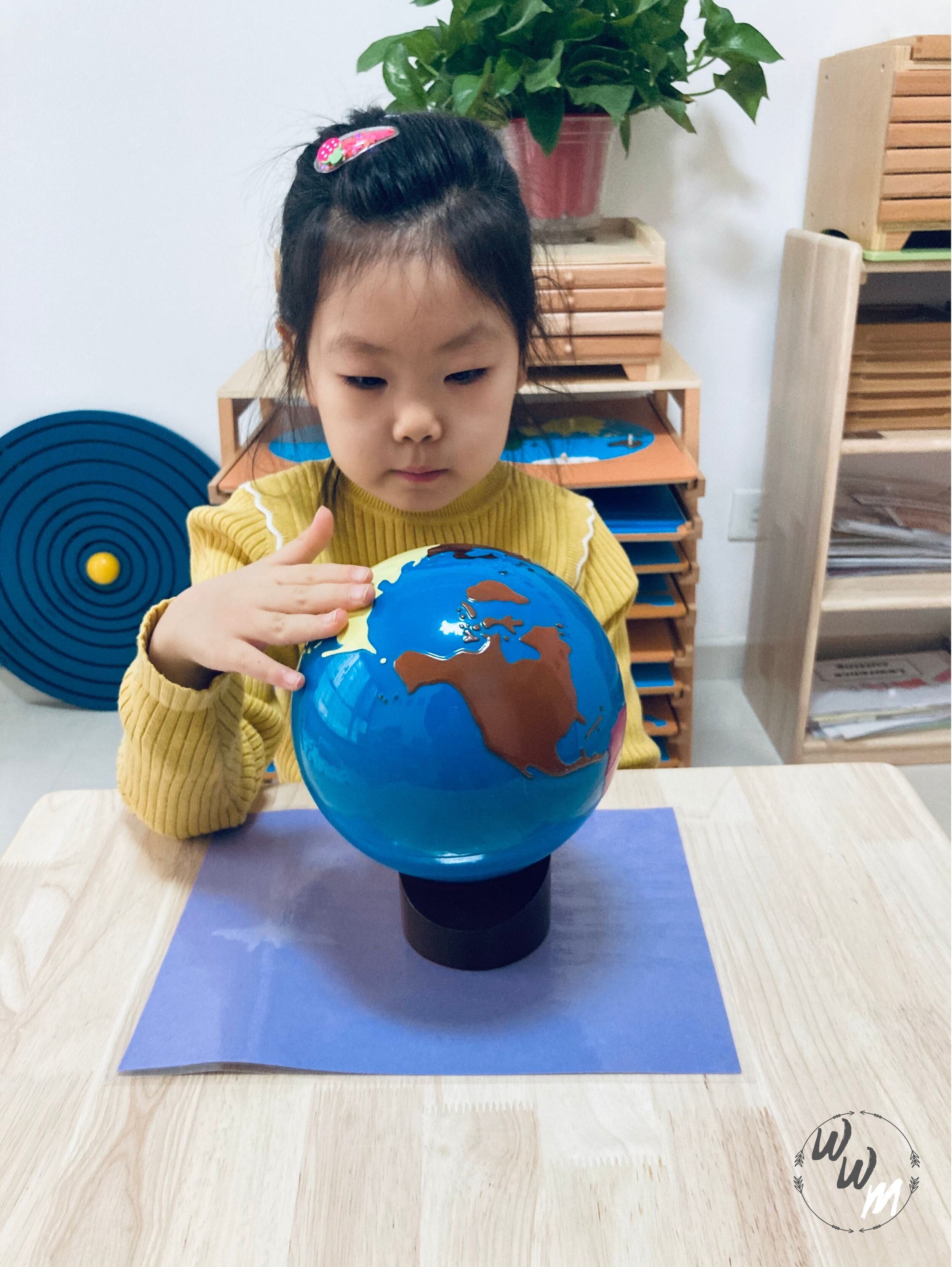Botany
The word ‘botany’ refers to nature. In Montessori, we teach children all about having a love and respect for nature. We also teach our children how to differentiate between living and non-living things. This truly makes the child understand that plants, animals and so on all have life, and we as human beings need to respect that life and value the importance of all living things.
The following activities in the Botany area in Montessori are as follows:
Nature table
The nature table is set up in the classroom. Children are encouraged to bring things from outside to observe, and place them on the nature table. It is a good way for children to gain a love and respect for nature.
Nature walk (group)
The directress guides a group of children outside to go on a nature walk. This is a wonderful opportunity for children to explore and observe the wonders of nature.
Blindfold trail (group)
A group of children will be guided outside and they will be allowed to experience the beauty of nature with their sense of sight taken away.
Silence game (group)
The directress guides a group of children outside and lets them experience all the amazing, different sounds of nature.
Sandpaper Globe
The Montessori Sandpaper Globe is one of the most famous Montessori materials out there. The globe has sandpaper on which represents land, and smooth blue surfaces that represent water. The child is encouraged to feel ‘land’ and ‘water’ to get a very tactile impression of our earth.
Continent Globe
The continent globe is a little different, as it represents the continents which are all painted in their respective colours. The water is painted in blue as before. Children are encouraged to learn the different continents and what each colour on the globe represents.
Living and non-living
This activity includes the directress introducing living and non-living pictures to the child. The child is encouraged to group the different pictures in the respective columns. The child learns the difference between living and non-living things, as well as instills a love and respect for nature.
Importance of the sun
In this activity, the directress introduces the sun and emphasises the importance of the sun for plants to survive. This is a wonderful exercise for the child to realize the role of the sun and how much we need it for survival.
Loosely grouped plant classified cards: matching
This activity includes a set of pictures of different types of plants. The child is encouraged to match the unlabelled set of cards to the labeled set. The directress ensures to make it interesting and involve the child as much as possible.
Loosely grouped plant classified cards: three-period lesson
The directress does a three-period lesson with the child to teach him the names of the various plants. This activity helps the child memorise names, and increases vocabulary.
Loosely grouped plant classified cards: for the reading child
This activity is done with a child that is able to read, as he will be encouraged to read the labels of the various cards and then match them with the correct pictures. This activity promotes reading, patience, and concentration.
The tree nature walk
The directress guides a group of children outside to observe various types of trees. This is a lovely activity that children really enjoy, especially in Autumn when the leaves on the trees change colour.
Tree puzzle
Children are encouraged to build the tree puzzle in the correct manner. This activity promotes concentration, spatial perception, and visual discrimination.
Tree nomenclatures: matching
This is a wonderful Montessori activity, where children are encouraged to match the unlabelled set of tree cards to the labelled set of cards.
Tree nomenclatures: three-period lesson
In this activity, the directress teaches the child the names of different parts of a tree. A three-period lesson is a wonderful way for the directress to know how much the child understands.
Tree nomenclatures: for the reading child
This activity is usually presented to children that are able to read, as they will be encouraged to match the labelled set of cards to the unlabelled set of cards.
The leaf cabinet (presentation one)
In this activity, the child is asked to remove and feel each leaf inset with the correct pencil grip and replace them back into their respective frames.
The leaf cabinet (presentation two)
For the second presentation using the Montessori leaf cabinet, the child is encouraged to match the leaf insets to their respective cards.
The leaf cabinet (presentation five)
The directress does a three-period lesson with the child to teach him the names of various leaves. This is a great way for the directress to determine how much the child understands so far.
The flower nature walk
The directress guides a group of children outside to go and observe all of the different types of flowers. This is a wonderful activity that can be done in Spring, as all of the new flowers blossom at this time.
Growing plants
In this Montessori activity, children learn how to grow plants. The experience the entire growth process of plants, and understand what conditions are best for plants to grow in.
Seed dispersal
In this activity, the directress teaches the child all about how seeds get dispersed and different forms of dispersal.





